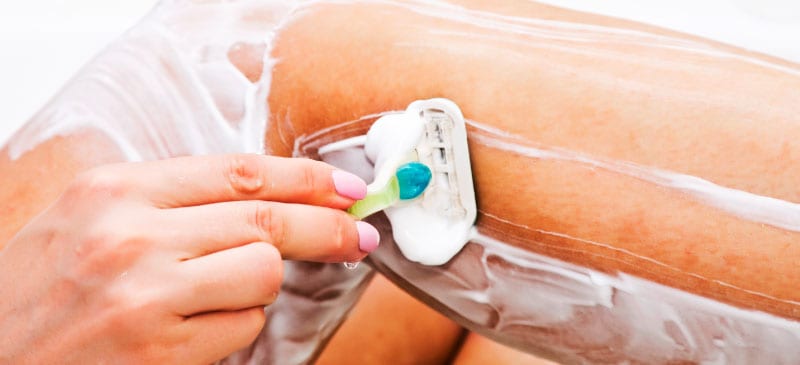This Dr. Axe content is medically reviewed or fact checked to ensure factually accurate information.
With strict editorial sourcing guidelines, we only link to academic research institutions, reputable media sites and, when research is available, medically peer-reviewed studies. Note that the numbers in parentheses (1, 2, etc.) are clickable links to these studies.
The information in our articles is NOT intended to replace a one-on-one relationship with a qualified health care professional and is not intended as medical advice.
This article is based on scientific evidence, written by experts and fact checked by our trained editorial staff. Note that the numbers in parentheses (1, 2, etc.) are clickable links to medically peer-reviewed studies.
Our team includes licensed nutritionists and dietitians, certified health education specialists, as well as certified strength and conditioning specialists, personal trainers and corrective exercise specialists. Our team aims to be not only thorough with its research, but also objective and unbiased.
The information in our articles is NOT intended to replace a one-on-one relationship with a qualified health care professional and is not intended as medical advice.
How to Get Rid of Razor Burn & Bumps
June 25, 2023

Have you ever noticed that it seems your hair grows back just minutes after shaving? While it really hasn’t, it’s annoying for most of us and makes shaving more of a chore than anything else.
Did you know that a survey revealed that women spend 72 days shaving their legs over the course of a lifetime, meaning approximately 1,728 hours? Shaving also ranked as women’s most disliked beauty ritual, with 35 percent of the women polled saying they loathed shaving their legs more than anything else, such as doing their hair and tweezing their brows.
But fear and loathing don’t need to continue when it comes to razor bumps and burns. If you prepare properly, you can prevent razor burn and bumps from occurring in the first place.
If they does occur, razor burn natural remedies such as witch hazel, aloe vera, tea bags, baking soda and more can help get rid of razor bumps. After you read all the natural ways to soothe your shaved skin, you might even start to look forward to shaving.
What Is Razor Burn?
Razor burn is an uncomfortable and unsightly skin condition that can occur after removing unwanted hair. It can cause unsightly razor bumps, known as pseudofolliculitis barbae, that take some time to heal. It can also cause ingrown hairs that occur when shaved hair regrows, curls around and grows back into the skin.
Razor bumps appear most frequently in African-Americans and others who tend to have curly beards and hair. Usually, the bumps will go away on their own after the hair grows out.
The symptoms of razor burn are razor bumps, redness and a stinging sensation. What causes these annoying characteristics in the first place? Usually, it’s caused by a poor quality razor or a razor that has lost its sharpness, resulting in the dulling of the blades. Dull blades often cause you to use more pressure, which can result in razor burn and that uncomfortable burning sensation.
Shaving is considered good hygiene for many, usually starting during teenage years. The most common areas are the legs, armpits, bikini, eyebrows, and face for females; and the face, abdomen, back, chest, groin, and legs for males.
It’s frustrating when you think you have gotten a good shave to realize that you have this annoying burning sensation commonly known as razor burn.
Believe it or not, your hair type may need a certain type of razor. You will likely need to experiment to find what is best for you. Regardless, switching out the blades after a few shaves or upon noticing that they are dull is always best.
How to Prevent Razor Burn
Because shaving can be a nuisance, many of us seem to skip important steps to ensure a good, smooth shave. After all, trying to get it done in a hurry can cause problems for your skin, such as creating razor burn or even bumps.
Shaving can be a challenge for both men and women, but there are many ways for how to get rid of razor burn as well as prevent them in the first place, ultimately helping you have a clean shave. Here are a few:
1. Do Not Dry Shave
Shaving without wetting the skin is a sure way to get razor burn! Before you shave, wet your skin which will soften the hair. Taking a shower or bath is the easiest way to do this. Most shave in the shower or tub, which gives you an easy method of rinsing the razor too.
2. Prep the Skin
Using a good moisturizing shaving cream, lotion or oil can enhance the results. Try to apply this homemade shaving cream or consider using coconut or olive oil.
3. Shave in the Right Direction
It is important to know which direction to shave. While shaving against the direction of hair growth can give you a closer shave, in some cases it can also give you lots of nicks so be careful, especially for the bearded fellows.
For your underarms, shave from all angles to include up, down and sideways. For the bikini area, shave in the direction of hair growth first (inward) and gently against for an extra-close shave, but again, be careful because this can cause razor bumps and ingrown hairs.
For the beards, shave in the direction of the hair growth and for the legs, shaving against the hair growth.
4. Find the Right Razor
Finding the perfect razor is a challenge. There are disposable ones and electric ones. That good razor is one key component to a good shave free of razor burn, razor bumps and razor rash.
5. Clean the Blades
Cleaning the blades of the razor is helpful to avoid build up from, not only the hair, but from the shaving cream, lotion or oil you may use. However, be careful not to rub off the smooth strip on the razor that allows for an easier shave.
6. Change the Blades
To ensure the best shave, change the blades when it becomes noticeably dull or throw away disposable razors after 5 to 7 shaves. This will help minimize irritation and the chance for bacterial infections.
7. Take Care with Acne When Shaving
If you have acne, you will need to take special care while shaving because it can irritate your skin and make the acne much worse. Never try to shave off acne. Shave carefully around acne instead. You can try both electric and safety razors to see which works best.
If shaving a beard, it helps to soften your beard with soap and water before putting on shaving creams, lotions or oils. Shave lightly and only when you have to. Consider my acne scar removal mask to help heal the acne as soon as possible, which will help you get to a smoother, cleaner shave sooner.
8. Heal Ingrown Hairs with a Hot Compress
You can make a hot compress by soaking a cotton wool cloth in hot water and pressing it gently against your skin. The heat opens up your pores, allowing the trapped hair to become free, and then grow out in the right direction.
9. Be Careful with Razor Nicks
Ever notice how a razor nick seems to never stop bleeding? Even a minor shaving cut can be complicated, especially if located around your lips where your beard may need maintenance, as that area is very sensitive. You may need to experiment with electric or disposable blade razors to see which work best for you and your skin type.
If using a razor, make sure it has a sharp blade since dull blades will cause razor nicks and cuts, razor burn, razor rash and razor bumps. Minor cuts from shaving are usually harmless as long as your razor is kept clean.
If bacteria has built up in your razor, it can cause infection. Some shaving cuts might be located in the area where clotting is really slow such as the lips. These cuts can leave permanent scars. So, make sure you shave lightly to prevent nicks in the first place.
Natural Remedies
Want to know how to get rid of razor burn? Look no further than these eight natural remedies.
1. Aloe Vera
Aloe vera has been known as a traditional remedy for helping soothe irritated skin. You can snip the tip of an aloe leaf and squeeze the gel directly onto the razor burn area, or you can purchase pure aloe vera gel at your health food store. Just make sure it does not contain any artificial colors or fragrances.
A study showed that topical application of aloe vera found no skin irritation but rather proved the integrity of the formulation. The aloe vera showed anti-inflammatory activity when applied.
2. Witch Hazel
Witch hazel can help clear acne, but it can also act as a natural antiseptic to help reduce inflammation in the skin. Witch hazel contains chemicals called tannins, and when applied directly to the skin, witch hazel may help reduce swelling, help repair broken skin caused by razor burn, and fight bacteria.
Simply apply it directly to your razor rash and bumps to help reduce the redness and irritation and provide faster healing.
3. Lemon Juice
Lemon juice is naturally acidic and helps to stop bacteria from colonizing ingrown hair follicles. Additionally, it is high in vitamin C, and can be used safely on the skin to help promote the skin to develop new skin cells more easily.
Apply lemon juice to razor burn to help reduce redness and prevent infection by killing any bacteria that may have formed.
4. Tea Tree Oil
Tea tree oil is a natural anti-bacterial agent. Use tea tree oil by applying a small amount to the razor bumps. Tea tree oil is a natural astringent, similar to witch hazel and lavender oil, and can help to alleviate skin irritated from shaving.
Pure tea tree essential oil should be used and is very strong, so always dilute it with a little water before applying it to your skin.
5. Tea Bags
Black tea bags may help to get rid of razor bumps. Black tea contains tannic acid, which can help reduce redness and inflammation as well as soothe burning caused by razor burn.
No need to go for the fancy ones since cheap tea bags contain more tannic acid and work better than more expensive brands. All you need to do is moisten a black tea bag in warm water, then rub it over the affected area for about three minutes. Repeat a couple of times a day as needed.
6. Baking Soda
Baking soda is an old-fashioned home remedy for razor burn that may also help get rid of razor bumps. Just dab a bit of it onto the skin using a cotton ball soaked in a cup of purified water and one tablespoon of baking soda.
Allow the mixture to remain on the skin until dry, then rinse with cool water. This should help the stinging and redness disappear. You can do this two or three times a day until the bumps subside.
7. Lavender Essential Oil
Lavender oil is known for its soothing and healing properties, helping to eliminate any redness and irritation that may have developed on the skin as a result of a bad shave.
Try applying lavender by diluting six to eight drops in a carrier oil, such as grapeseed or almond oil, and gently massage onto the skin.
8. Coconut Oil or Olive Oil
Many oils that you may use for food preparation can actually be great for your shave. Often these products would work best by wetting the area before the razor is used. Animal fats and vegetable oils may have been used as a shaving lubricant since the practice of shaving began.
The use of oils for shaving, or shave oils, is growing in popularity, largely due to their razor glide-enabling and moisturizing properties, and because shave oils can be made without the addition of toxic chemical ingredients and may assist in making the shave smoother and closer since they are non-irritating.
Coconut oil and olive oil are both non-comedogenic, meaning that they can be used on the skin without clogging pores. They are highly highly emollient helping to soften the skin. Olive oil is absorbed by the skin a bit faster than coconut oil, but both are great options leaving the skin silky smooth.
Precautions
It is best to use a natural shaving cream or lotions such as one found in my DIY recipe collection; however, keep in mind that commercially bought versions may cause irritation. Commercially made shaving cream can cause allergic reactions.













This has helped me so much
Dear Dr. Josh,
Thank you for providing me with the Highest quality nutrition and health tips that have helped me shape my life to be different from others of my age. Razor burns have always been my greatest problem but you have given me enough knowledge to deal with amicably.
Thanks once again.
Using water to dilute oil is not the proper way to dilute. I find it odd that would it would be suggested to use an essential oil without an emulsifier, from a doctor.
Hi, I have been applying lemon juice and ant-itching cream to my razor burn for 3 days. It turned into like a scab. It stings and won’t go away . Its on my upper lip and is super embarassing. HELP!
I can respect a lot of the information on this site… but there is some information that is false. Can one truly take a “Doctor” who cites Wikipedia as a source to be correct???
I’m confused about deleting tea tree oil with water. That doesn’t seem to make sense, since oil and water don’t mix. Wouldn’t you dilute with a carrier oil instead?
I use it wet cotton wool with couple drops of tea tree essential oil it’s fine n works better
You said that coconut oil and olive oil are non-comedigenic, but coconut oil is actually listed as a 4 on a scale of 1-5, meaning it can clog pores. Can you please help me under the discrepancy?
Dr Axe,
Could you be so kind, as to share any knowledge you have about myelopathy? Or , as mine was contracted through zinc poisoning, which eliminated all copper in my body, be able or willing to share with me a food program I could use? Diagnosed through one I found the top neurologist at Emory. Also since mobility is very limited, any exercises you’d recommend. Pray God continues to bless you.
~Christy Harding